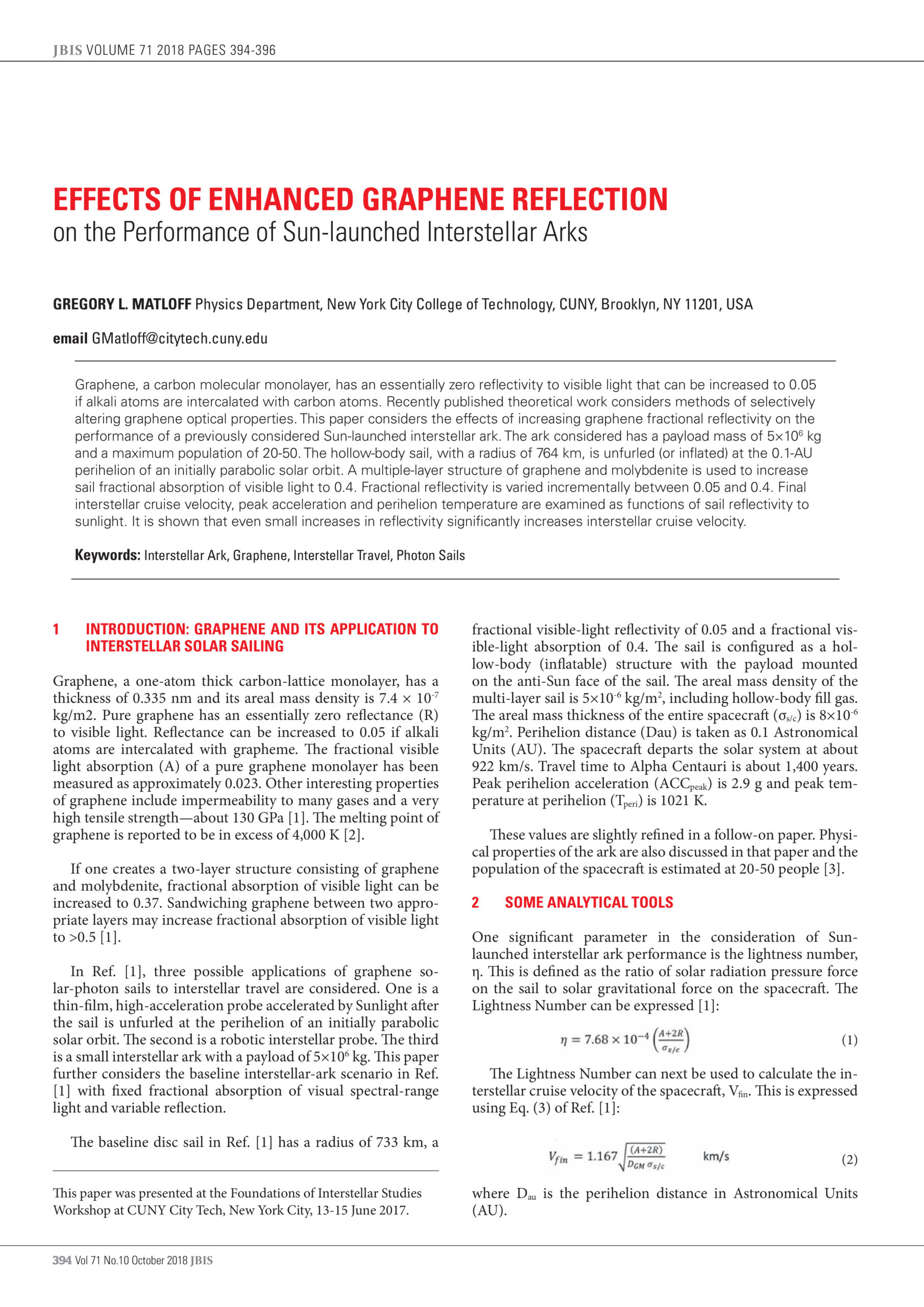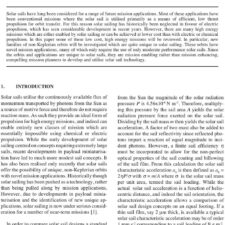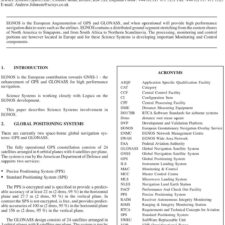Effects of Enhanced Graphene Reflection on the Performance of Sun-launched Interstellar Arks
£5.00
G. L. Matloff (2018), JBIS, 71, pp.394-396
Refcode: 2018.71.394
Keywords: Interstellar Ark, Graphene, Interstellar Travel, Photon Sails
Abstract:
Graphene, a carbon molecular monolayer, has an essentially zero reflectivity to visible light that can be increased to 0.05 if alkali atoms are intercalated with carbon atoms. Recently published theoretical work considers methods of selectively altering graphene optical properties. This paper considers the effects of increasing graphene fractional reflectivity on the performance of a previously considered Sun-launched interstellar ark. The ark considered has a payload mass of 5 x 106 kg and a maximum population of 20-50. The hollow-body sail, with a radius of 764 km, is unfurled (or inflated) at the 0.1-AU perihelion of an initially parabolic solar orbit. A multiple-layer structure of graphene and molybdenite is used to increase sail fractional absorption of visible light to 0.4. Fractional reflectivity is varied incrementally between 0.05 and 0.4. Final interstellar cruise velocity, peak acceleration and perihelion temperature are examined as functions of sail reflectivity to sunlight. It is shown that even small increases in reflectivity significantly increases interstellar cruise velocity.





